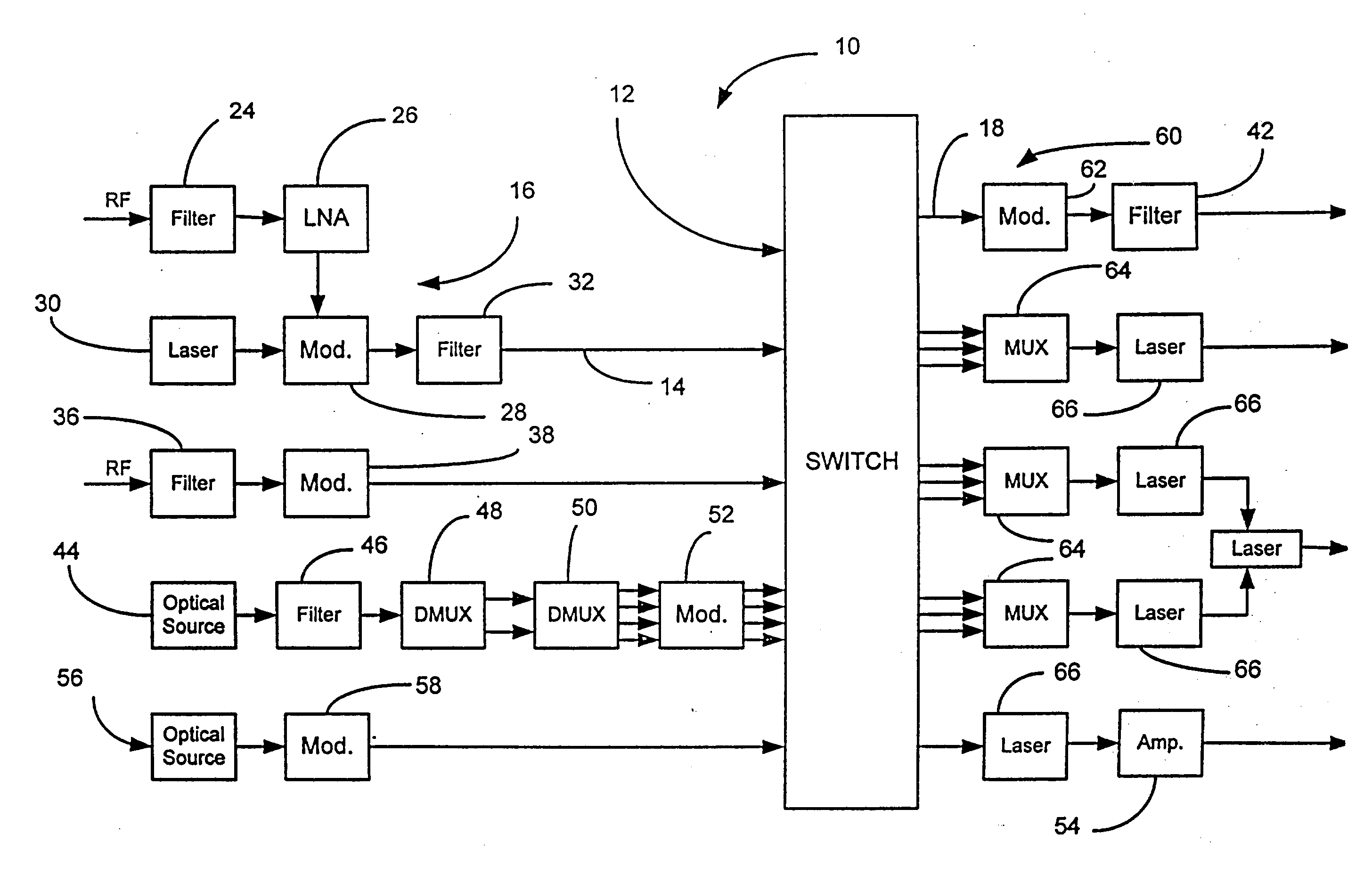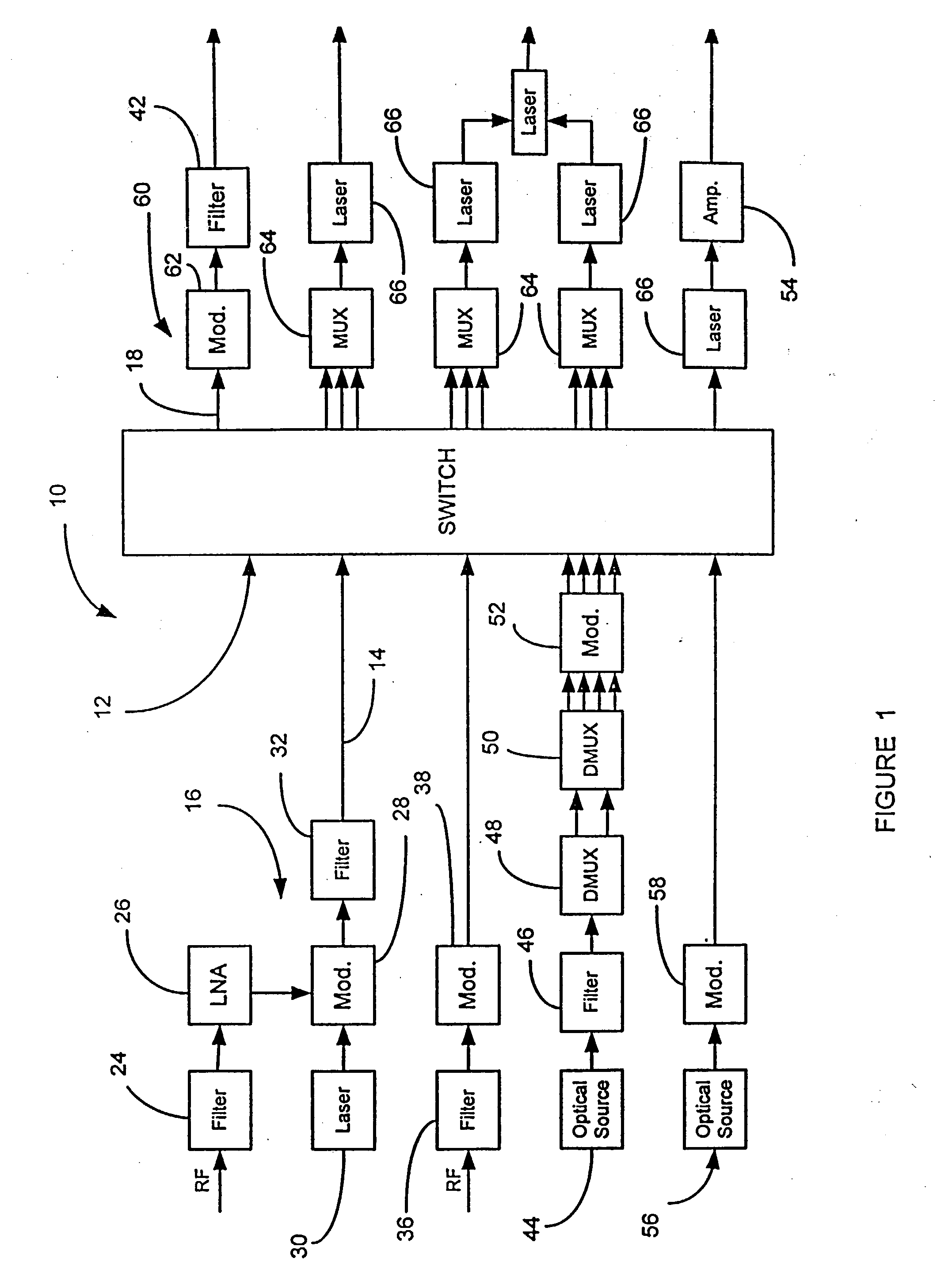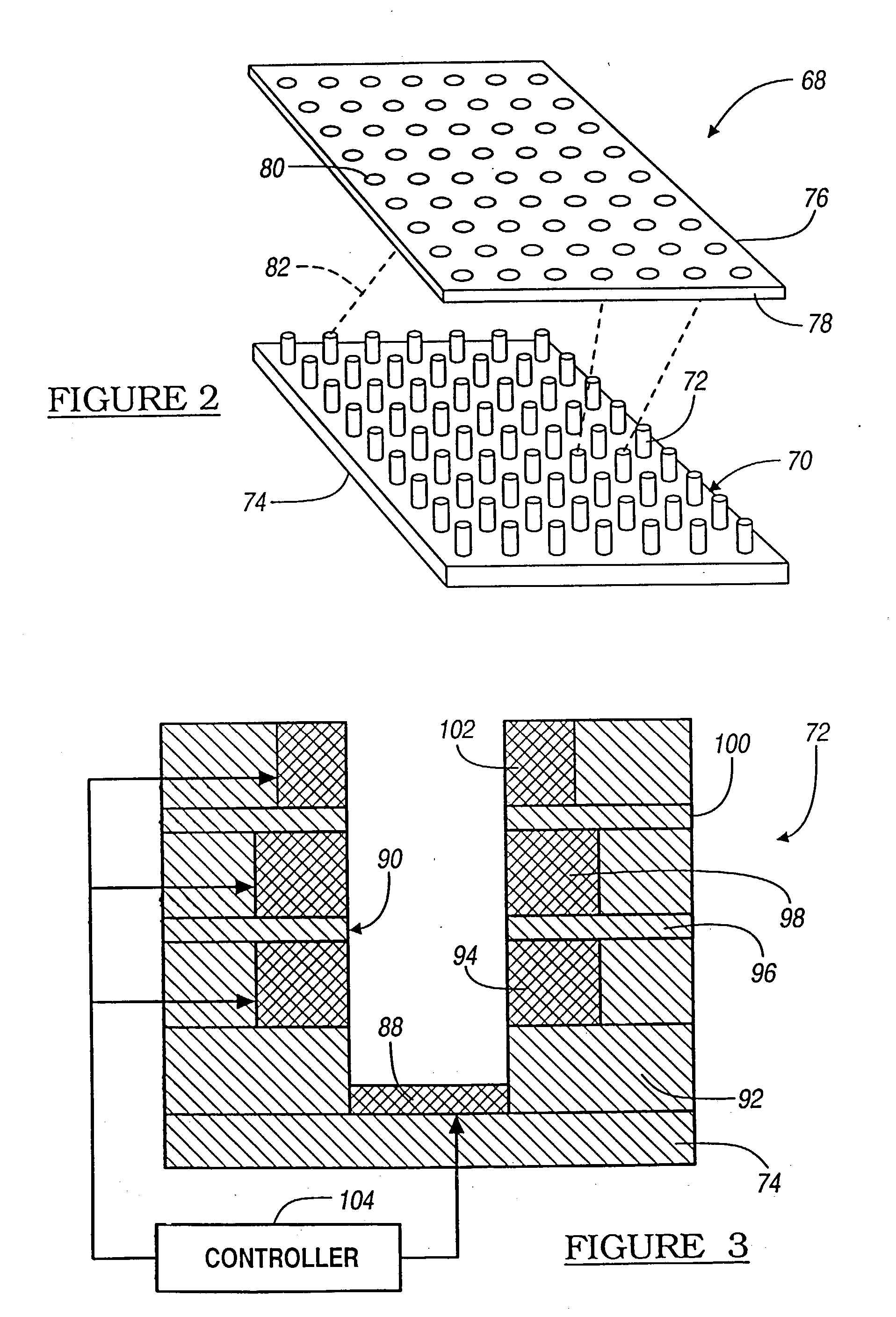When optical signals are transmitted over great distances through optical fibers, attenuation within the fibers reduces the optical
signal strength.
Because photons are highly non-reactive to the propagation medium of the
optical fiber and to each other, providing suitable
photon switching devices to redirect the optical signal is typically difficult.
Further, pure optical switching is difficult to achieve because photons cannot be directed or steered without modifying the physical medium through which they propagate.
Because the process of modifying the physical medium to steer an
optical beam tends to be slow and unwieldy, few
photon switching technologies provide a fast enough
response time necessary for state-of the-art optical switching speeds, and those that may be fast enough typically cannot be scaled suitably to provide a sufficient number of output ports.
Digital MEMS switches potentially provide a relatively low switching speed (latency), but are not scaleable.
Further, the number of internal components in a digital MEMS switch increases exponentially as the number of output ports increases, making them difficult to scale beyond a few hundred ports.
However, analog MEMS switches typically have a high switching latency (low switching speed) requiring milliseconds to switch.
The
longevity and reliability of MEMS switches for optical signal switching applications are suspect.
Therefore, if an analog MEM switch could operate fast enough to switch optical packets at commercially acceptable speeds, the switch would barely survive one minute before reaching the end of its
operating life.
Further, MEMS switches are sensitive to shocks, are fragile, and are bulky.
However, it is not clear that this will eliminate the need for regenerator lasers, especially in real-world networks that have multiple hops and long-transmission lengths.
Tunable lasers do not mitigate this problem, because they still require that a given
wavelength signal be reserved from end-to-end of the network.
However, all of these technologies typically suffer from lack of
scalability and have a high switching latency.
Also, the de-multiplexers and multiplexers that separate the bit
stream and then recombine the
stream is complex and requires exotic switching technology, especially for OC-192 bit rates and beyond.
As a result, CLOS interconnected crossbar switches have very large footprints, and consume a large amount of power.
Switching speed has also presented a problem with CLOS-based switches.
Moreover, their switching speed is non-deterministic, in that the amount of time needed to establish a connection is highly unpredictable.
For packet-by-
packet switching applications, the complexity of the
packet forwarding engines and traffic managers that control the switch is greatly increased because it is difficult for the switch to guarantee FIFO packet behavior.
Further, unwanted effects are introduced into the output packet
stream, such as
jitter.
It is likely that many of the CLOS crossbar-based electronic switches that are used within OEO optical cross-connects have such a slow switching speed and are highly unpredictable that they may not be suitable for packet-by-
packet switching.
Board-to-board connector density is also a serious concern with CLOS switches.
Therefore, CLOS based switches are limited by the connector density, trace density and interconnects needed to create all of the internal intra-switch bandwidth.
As a result, it has been suggested that CLOS switches hit hard limits in terms of board-to-board connector density at 512 output ports.
Thus, as discussed above, these devices have proved complex and difficult to scale for switching applications, and they are limited by the speed at which their
solid-
state logic gates are capable of switching.
 Login to View More
Login to View More  Login to View More
Login to View More 


